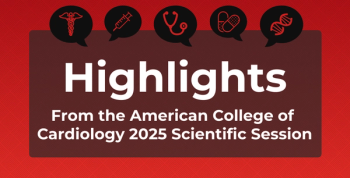
MBSR Reduced Pain Perception in Patients With Migraine
The finding about mindfulness-based stress reduction (MBSR) was a secondary outcome of the double-blinded, randomized, placebo-controlled clinical trial. The primary outcome—a reduction in the frequency of migraines—was not reached.
A recently-published study of mindfulness-based stress reduction (MBSR) hypothesized that the technique would reduce the frequency of migraines, as compared with a standard headache education program.
While the researchers found that headache frequency did not change by participants using MBSR,
Writing in
They conducted a double-blinded, randomized, placebo-controlled clinical trial of MBSR vs headache education for adults with migraine. Other outcomes of interest were changes in disability, quality of life, depression, pain catastrophizing, and self-efficacy. The study also included quantitative sensory testing (QST) to evaluate pain perception by experimentally induced pain intensity and "unpleasantness" through different stimuli. The hypothesis was that MBSR would decrease the perception of unpleasant pain more than the intensity of pain.
The primary outcome, change in migraine day frequency, was measured from baseline to 12 weeks; the secondary outcomes were tracked from baseline to 12, 24, and 36 weeks.
The trial included 89 adults, the vast majority of them female, with a mean age of nearly 44, who had between 4 and 20 migraine days per month and high disability; the mean (SD) migraine days per month were 7.3.
Forty-five patients were placed in the MSBR group for 2 hours a week for 8 weeks; 44 received headache education, also for 2 hours a week for 8 weeks. The MSBR program included yoga and meditation, including electronic audio to practice at home, ideally for 30 minutes a day. The headache education group received instruction on headaches, pathophysiology, triggers, stress, and treatment approaches.
Most participants in both groups attended class (median attendance, 7 of 8 classes), and followed up through 36 weeks (73% for both groups).
Both groups had fewer migraine days per month, but with no statistically significant differences between the 2 groups (P = .50). The MBSR group had –1.6 migraine days per month (95% CI, −0.7 to −2.5); the headache education group had −2.0 migraine days per month (95% CI, −1.1 to −2.9).
The secondary outcomes, however, had moderate to large, persistent effect sizes, which the authors said should be explored in additional research. The patients in the MSBR group had greater decreases from baseline in pain unpleasantness and intensity after the application of experimental stimuli. And patients reported improved disability, quality of life, self-efficacy, pain catastrophizing, and depression at the final 36 week assessment.
By 36 weeks, the MBSR group demonstrated a 36.3% decrease in intensity (95% CI, 12.3% to 60.3%) and a 30.4% reduction in unpleasantness (95% CI, 9.9% to 49.4%) while the headache education group demonstrated a 13.5% increase in intensity (95% CI, −9.9% to 36.8%)and an 11.2% increase in unpleasantness (95% CI, −8.9% to 31.2%)
“For a condition with recurrent, lifelong unexpected attacks, improving a patient’s pain perception and ability to function despite migraine has significant implications for overall long-term emotional and social health,” the authors wrote. noted.
Reference
Wells RE, O’Connell N, Pierce CR, et al. Effectiveness of mindfulness meditation vs headache education for adults with migraine: A randomized clinical trial. JAMA Intern Med. Published online December 14, 2020. doi:10.1001/jamainternmed.2020.7090
Newsletter
Stay ahead of policy, cost, and value—subscribe to AJMC for expert insights at the intersection of clinical care and health economics.












































